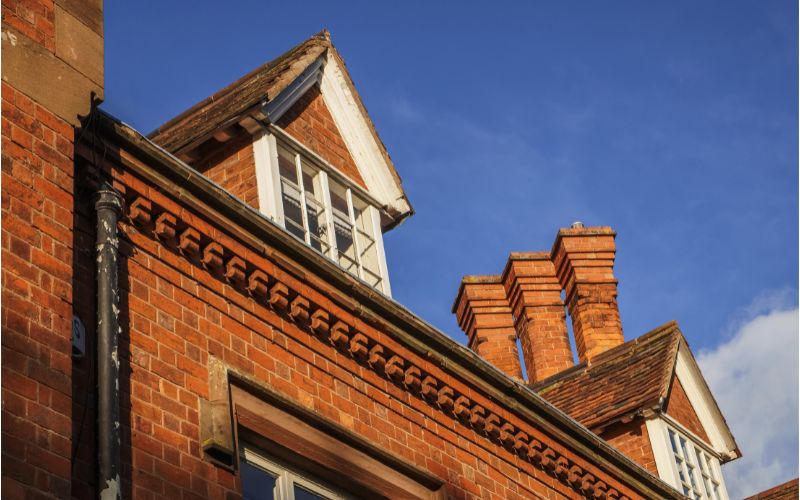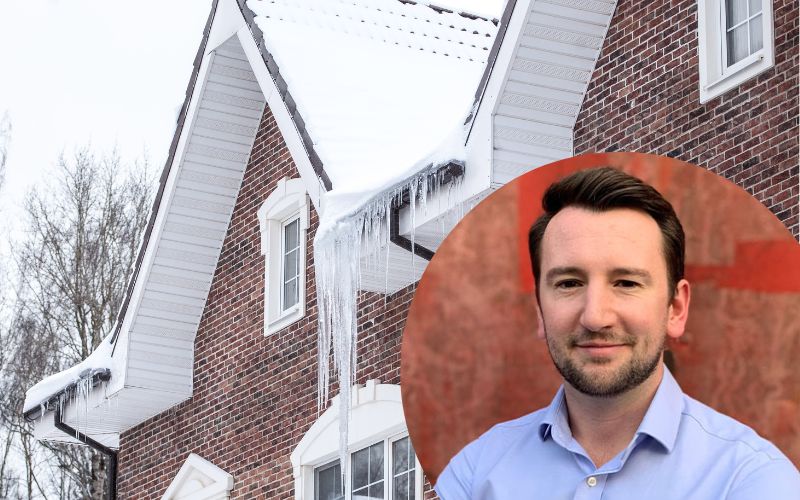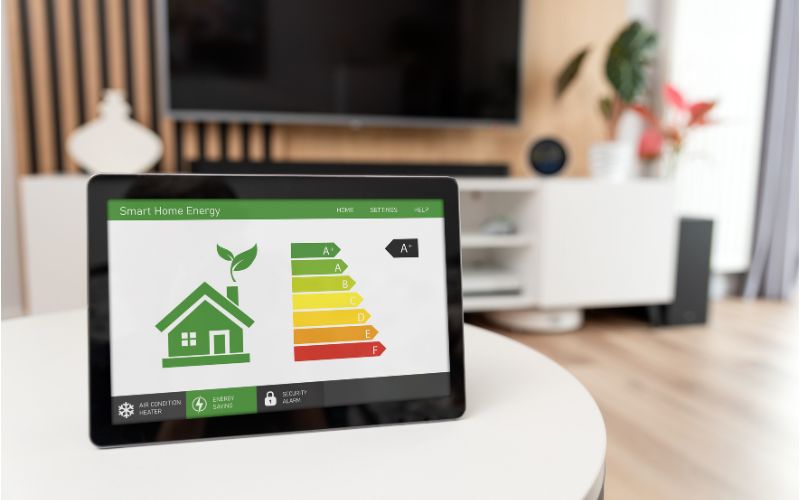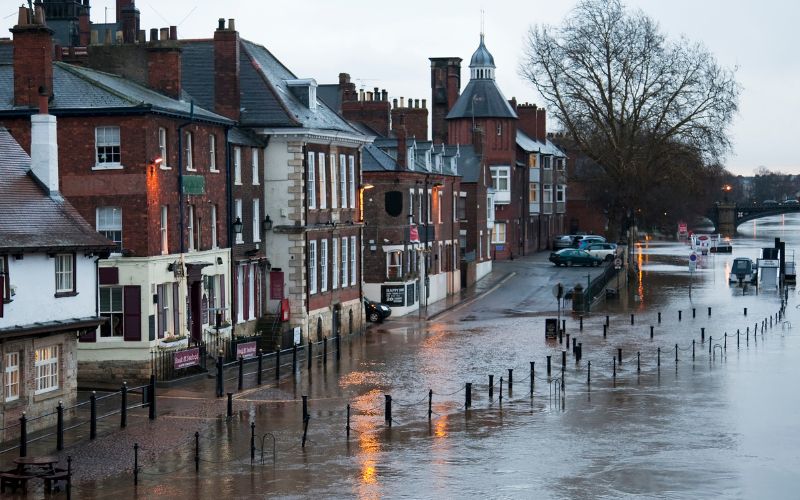Regular maintenance, inspections, and a few preventive measures can go a long way in ensuring your home is well-prepared to face the challenges of winter, ultimately saving you both time and money in the long run.
Draughts and air leaks
Often caused by poorly sealed windows, doors, or gaps in insulation, unwanted draughts can lead to noticeable drops in room temperatures.
Not only does this make living spaces less comfortable but it also forces heating systems to work harder to maintain a desired warmth, causing certain areas of the home to feel colder than others and resulting in increased energy consumption – as well as higher utility bills.
Properly sealing gaps and addressing air leaks not only helps keep your home well heated but also optimises energy efficiency, promoting a more sustainable and cost-effective living environment during the winter months.
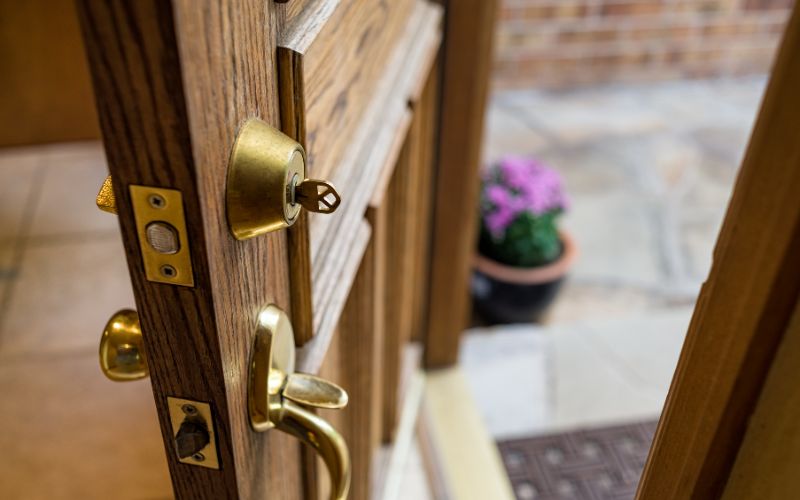
Frozen pipes
When water inside pipes freeze, it expands, exerting immense pressure that can lead to pipe bursts.
The consequences range from water damage to walls, ceilings, and floors to potential flooding. The risk of mould then increases from untreated damp left by burst pipe(s).
Moreover, ice can often build-up and cause blockages that disrupt water supply and, in extreme cases, result in extensive repairs.
Beyond the immediate physical damage, the cost of repairing and replacing damaged pipes are significant; therefore, preventing frozen pipes through sufficient insulation and proper heating measures is crucial.
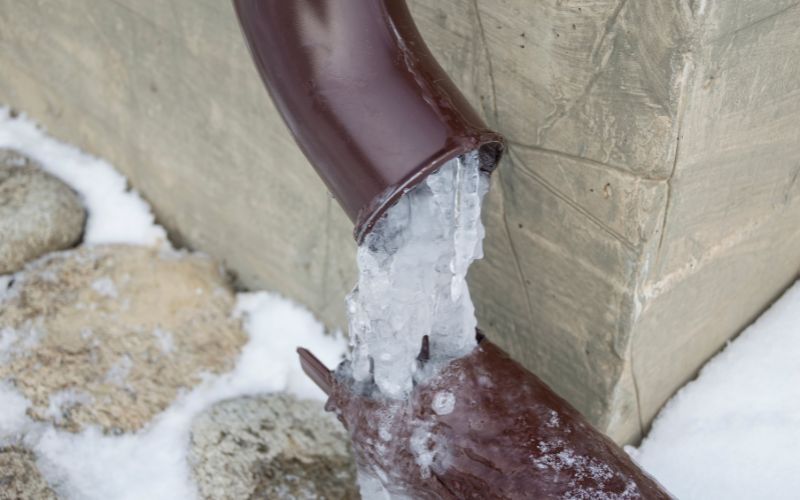
Roof leaks
Water entering through a compromised roof has the potential to cause structural damage, as water infiltrating the attic or insulation can weaken the framework over time.
Roof leaks can cause your home to be insufficiently insulated, leading to increased energy costs as the heating system works harder to maintain comfortable indoor temperatures.
Additionally, the presence of moisture provides an ideal environment for mould and mildew growth.
Ensure your roof is in good condition before winter by repairing any damages and cleaning gutters regularly to allow proper drainage and avoid substance build-up.

Inadequate insulation
Insufficient insulation allows the cold outdoor air to infiltrate your home, leading to temperature fluctuations and discomfort.
Draughts and heat loss become prevalent, forcing heating systems to work harder and longer to maintain a desired temperature, subsequently causing a spike in energy bills.
Moreover, the lack of proper insulation can contribute to the formation of condensation and moisture issues, prompting mould growth and damage to the structure.
By regularly checking that your insulation is still intact, undamaged, and up to date, this allows you to keep your home warmer for longer, minimising the cost of utility bills whilst also promoting the energy efficiency of your property.
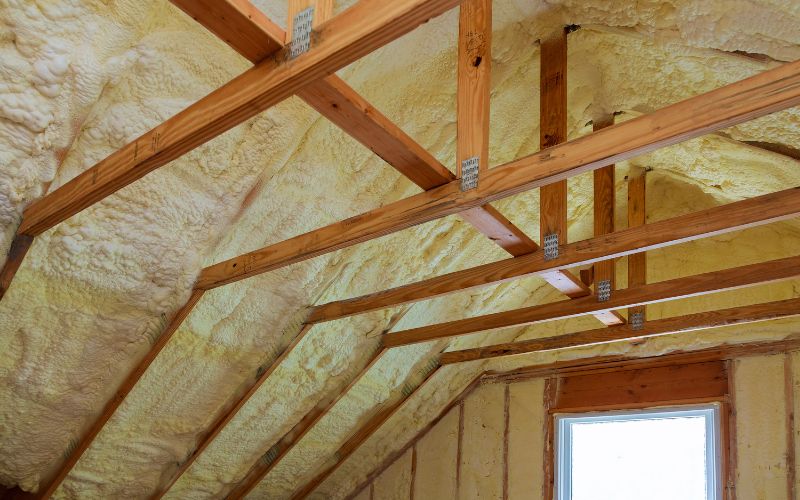
Heating systems
Poor heating systems during the winter not only results in chilly indoor temperatures but various health issues such as respiratory problems, colds, and in extreme cases - hypothermia.
Suboptimal heating increases moisture levels in the home, promoting the growth of mould and mildew, which poses other significant health risks too.
Aside from illness and discomfort, an inefficient heating system is one of the biggest culprits of higher energy bills, as homeowners often attempt to compensate for the lack of warmth.
To prevent heating systems from malfunctioning, replace air filters regularly, bleed radiators, and ensure that thermostats are functioning correctly. Consider installing a programmable thermostat for efficient temperature control.
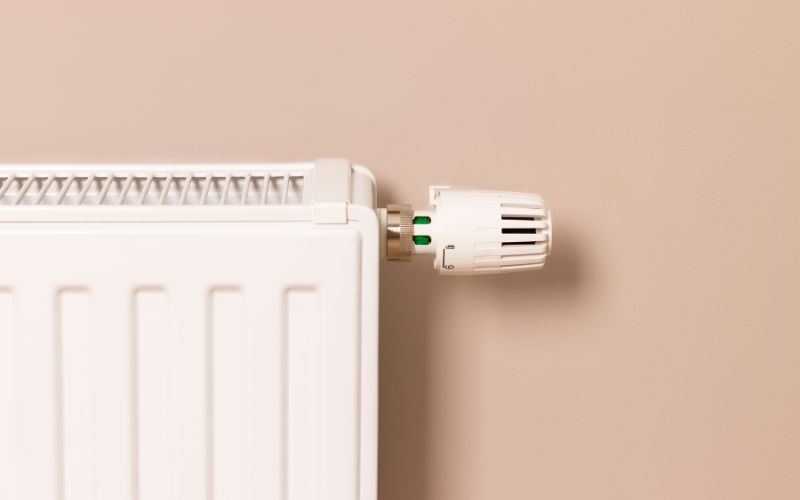
Damp and mould
Dark green or black spots on walls, floors, and around the house indicate the presence of mould. You can usually find mould where an area has been exposed to excess moisture for example, in the case of a leak or untreated damp.
Damp can permeate walls and ceilings, resulting in structural damage, as well as creating an ideal breeding ground for mould.
Furthermore, mould can be a particularly worrying problem if left untreated as spores tend to linger in the air and have the potential to trigger respiratory issues, allergies, and exacerbate existing health conditions.
Beyond health concerns, these issues can negatively impact the aesthetics of the home, causing unsightly stains and odours.
Homeowners should ensure that rooms around the house are equipped with extractor fans to remove excess moisture generated during activities like showering or cooking. Regularly opening windows and doors to promote air circulation is also beneficial.
Keep living spaces well-heated to help maintain a balanced indoor temperature and reduce the likelihood of condensation. Promptly fixing any leaks or water damage, whether from roofs, pipes, or appliances, is also vital in preventing the onset of dampness and mould growth.
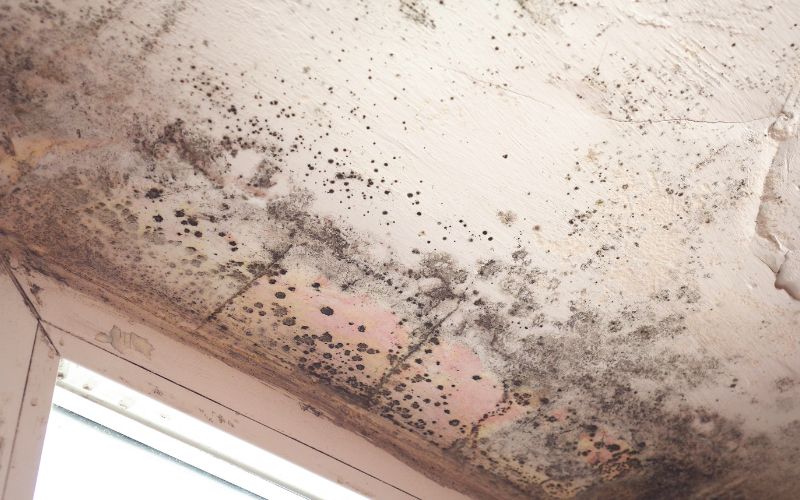
Cracked foundations
Freeze-thawing is the fluctuation of outside temperatures which can exacerbate existing cracks in the foundation of your property. When water seeps into these cracks and freezes, it expands, putting additional pressure on the foundation.
Over time, this can affect the stability of your entire home. The expansion and contraction caused by those temperature fluctuations widens existing cracks, allowing more water infiltration.
This then leads to moisture issues, leaving room for mould growth and potential damage to the interior.
Additionally, an unstable foundation may impact the alignment of doors and windows, causing difficulties in opening and closing, and may even result in uneven settling of the structure.
To mitigate these effects, homeowners should address foundation issues promptly, seeking professional assistance to repair and reinforce the foundation before winter sets in, preventing potential long-term damage to the property.
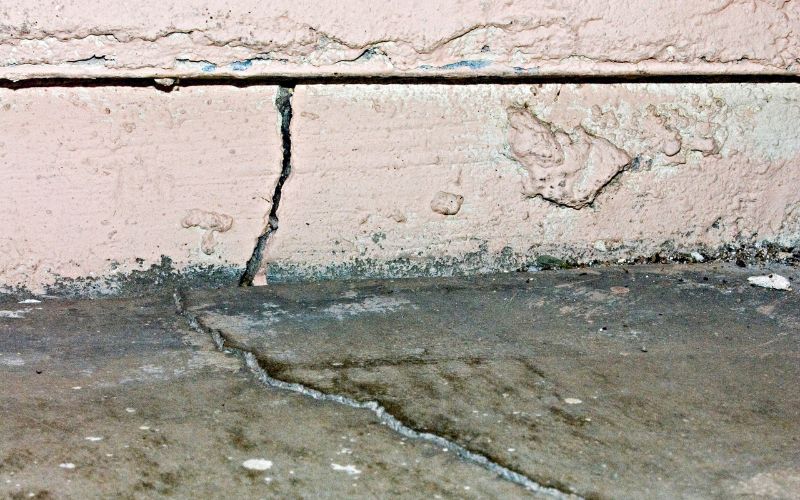
Exterior damage
Winter weather can subject homes to various types of exterior damage, posing challenges for both its structure and aesthetic appeal.
Frost heave, caused by the freezing and thawing of soil, may exert pressure on a home's foundation, causing cracks and compromising stability.
Extreme cold temperatures can also result in the contraction of building materials, such as siding and caulking, leaving gaps and vulnerabilities. Furthermore, roofs and gutters can end up overloaded with snow, adding additional strain to the roof of your home.
Homeowners should be cautious when there are extreme winds as they exacerbate these problems by causing further damage to roofs, siding, and other exterior elements.
Exterior damage is harder to prevent, therefore, we would recommend you seek the advice of a chartered building surveyor through a level 2 or 3 building survey.
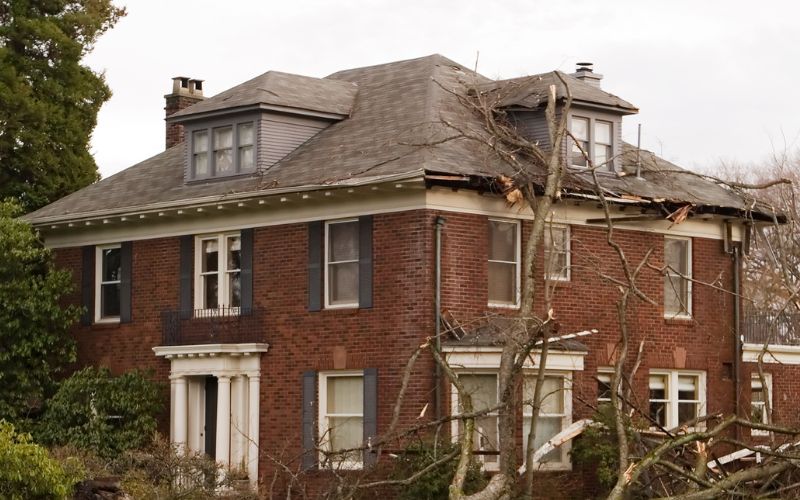
What do we recommend?
In all circumstances we recommend that homeowners should seek the professional advice of a chartered building surveyor.
We have a number of services available to homeowners, including both a level 2 and level 3 building survey, which can identify hidden defects and potential problems - in addition to providing preventative measures and individual advice tailored to your property's needs.
Who are we?
Our team of Chartered Building Surveyors work closely with estate agents, landlords, lenders and local authorities across London and the South Coast to proactively navigate a changing horizon. From ensuring new projects are delivered on time and in budget, to delivering upgrades on behalf of councils.
Read more about our solutions here:
Reinstatement Cost Assessments
Planned Preventative Maintenance
Alternatively, email us at enquiries@sillencehurn.co.uk or call our Southampton team on 02380 014786 or London at 020 3143 2128.
If you're looking for the next steps in your career why not check out our latest opportunities and see if we align with you and your values!


